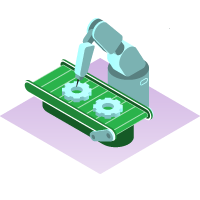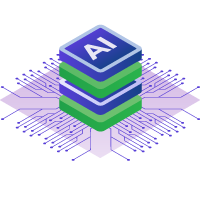This year, there are more commercial tools offering no-code and low-code test automation solutions, helping the testing community to worry less about the tech stack.
As the testing industry evolves with many new principles and tools, testers should also continuously improve their skills in order to test their product more robustly.
The testing trends of 2022 were filled with innovations from AI/ML and open-source tools like WebDriverIO releasing their latest version, v8 with enhanced features like a new actions interface, and a new runner for unit and component testing.
It’s important to stay up to date with the latest testing trends, especially when it comes to planning your testing strategy. In this article, we’ll show you the top 5 testing trends of 2023, so let’s get you up to speed in the testing community.
1. Exploratory testing
2. Testing in production
3. Next-Generation Mobile Testing
4. Assisted AI with Test Automation
5. Continuous Testing for Non-Functional Tests
1. Exploratory Testing

With the market needing to deliver products faster, testers don’t have time to write formalized test cases, which consume a significant amount of time. Exploratory Testing is the only testing type that encourages us to test from a different perspective and identify unknown risks and bugs.
With the domain knowledge and the tester's mindset, exploratory testing can be carried out to explore the product more intuitively. As exploratory testing is done without any scripted test cases, the testing is more controlled by the tester, which helps explore the application from an end-user perspective. The Xray Exploratory App can be used to assist you with exploratory testing and reduce the fuss around testing documentation.
2. Testing in Production

We are in an era where customers want to experience more features from the software they use. Hence, it has become a challenging task for engineering teams to deliver software at an even greater pace. This challenges testing teams to perform thorough testing on the product that is being released within a short period.
As of today, we test our product in lower environments like development, QA and Staging, finding more bugs before it goes to the customer’s experience. However, testing in these environments takes a lot of time and effort, which reflects in product delivery. Testing in Production (TIP) is a software development principle in which the newly developed product or features are deployed and tested on live user traffic. In real-time, we test our products by trying to simulate the production kind of infrastructure and workflows. Still, we have live defects getting reported.
To perform TIP, we need to use the advanced concepts of feature toggles. Using these toggles, we can expose the live product to a limited time in production for testing and roll back the changes if necessary. This helps more complex edge cases, different test data and APIs in real time.
3. Next-Generation Mobile Testing

According to this survey by bankmycell.com, there will be 6.92 Billion smartphone users in the world. Many organizations and small-scale businesses heavily rely on mobile apps and invest large amounts to develop and deploy their apps to the users. This means we need to have some extra hands and eyes to perform mobile testing. Performing mobile testing in a manual way on real devices is not suitable in today’s fast-moving software delivery models.
Testers across the globe should think about adopting modern mobile automation strategies. Automation strategies help test the mobile apps more robustly. Mobile testing should not only be performed on the latest devices, but also supports the previous models. To help you focus more on the devices you need to test, get the analytics via your Platform Engineering team on the most popular devices your apps are being used. Use cloud providers to run your tests against various device models and OS versions.
4. Assisted AI with Test Automation

Artificial Intelligence will be a trending topic in the testing industry for this decade. With the evolution of AI tools like ChatGPT and existing tools like Applitools & Reportal.io in place, testers across the globe take advantage of these tools to make their testing easier. AI tools will play a significant role in the testing industry to help testers to perform testing more rapidly and help to reduce errors.
One instance of using AI is that it can identify various possible combinations to test a product. AI also helps generate a code template for automation, effective code optimization for visual testing, and analyzing the test results.
5. Continuous Testing for Non-Functional Tests

Non-Functional testing like performance testing, accessibility testing and security testing is becoming more essential to deliver products much faster. But, NFT will always be an isolated process and happens at the end of the release cycle. Sometimes, defects identified at the end of the regression cycle cannot be fixed before they reach the end-users, and they have to be added to the backlog.
While performing non-functional testing, it’s harder to detect defects before the end of the cycle. This is the reason why we need to implement the NFT in the Continuous Testing (CT) cycle. For example, carefully identified performance test cases can be used to run in the CT to test if the application under test can perform well. Likewise, for accessibility, we can shift left and perform accessibility testing as part of the sprint user story, which helps developers fix issues instantly without waiting until the end.
Start exploring the Software Testing Trends of 2023
In 2022, testers across the globe realized the benefit of using AI in their testing process and this year, it will continue to go to the next level. Because the testing process is shifting left, concepts like NFT in a continuous testing cycle will continue to trend, as they help find bugs much earlier and increase the overall quality of products.
Testing in Production is also not new, and tech giants like Netflix use this strategy to eliminate more defects. Finally, exploratory testing continues to be an approach that more and more organizations are incorporating into their strategies in order to uncover unknown risks.
So, which of these trends will you try in 2023?


